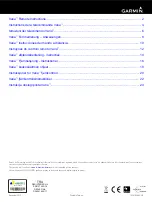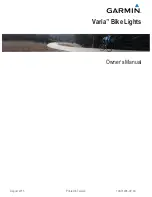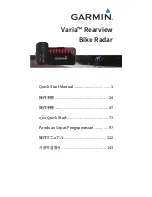
920(XX)(XX).000(#) & 920(XX)(XX).020(#) HORIZON AWNING INSTALLATION and OPERATING INSTRUCTIONS
7
B. To Close
1. Remove stakes if in the carport position, or from
wall bracket if in patio position.
2. Place the hook of the crank into the eye of the gear
and roll awning up, to within 3-feet of being closed.
Lower the lead rail as required if the awning is in
the carport position.
2. Pull the adjustment knob, and retract the support
arms until knob is in top most hole.
3. Using FIG. 8 as reference, reverse the steps to
properly stow the support arms into the leadrail.
Support arm foot must be between the leadrail and
stow clip. See figure 8A.
4. Finish rolling up awning.
C. Other Operation Notes
Important:
We remind you that the awning is to
shelter you from the sun, not from rain, wind or
snow.
1. To resist unexpected gusts of wind, it is always
best to set awning legs into the patio position. If
carport position is to be used, be sure that the aw-
ning feet are properly staked into the ground. For
further protection we recommend the ends of the
awning leadrail be tied with straps (not provided)
and staked to the ground.
2. If heavy wind and/or rain conditions exist, retract
awning and place in storage position!
Important:
Never leave the awning in a position that
causes the fabric to have no slope. Adjust both arms of
the awning 5 to 6 adjustable arm holes below awning
rail (fabric slope approximately 10 degrees).
Water Pooling Hazard:
Whenever rain is expected the awning must
be placed in the storage position. Pooling
of water on top of the awning fabric, will
make the awning unstable causing the arms
and roller tube to bend or collapse. Never
release adjustment knob with water pooled
on canopy. This will result in personal injury,
death and damages to the awning and/or rec-
reational vehicle.
3. If light rains are expected, place the awning in the
water shed position. See FIG. 11
hole and turn until it engages the nut.
c. Slide the small tension rafter inside the large
tension rafter as shown in figure 14.
5. Tension rafter application.
a. Lower the Front Bar to an accessible shoulder
level by lowering the rafter arm.
b. Place large end against the center of the back
cover of the case as shown. See Figure 15.
c. Extend tension rafter, placing small end in front
bar as shown approximately 6” off the center
of the front bar.
d. Tighten knob.
e. Pull small end of tension rafter to the center
of the front bar. This will tension the fabric.
f. If front bar was lowered, raise to the desired
height.
Tension Rafter
FIG. 12
FIG. 11
Lower Arm Away
From Door 5-6
Additional Holes.
Note:
The awning is designed with a water dump feature
that will lower one side of the awning to allow water to run
off. Before the water dump feature will operate as designed,
lower both arms 5 to 6 holes (fabric slope approximately
10 degrees) below the coach awning rail. See FIG. 11.The
water dump feature will not work if awning slope is zero
degrees or near zero degrees.
4. The 13 ft -16 ft awnings come with a tension rafter
assembly. FIG. 12
a. Position the square nut inside the small tension
rafter. Align the threaded hole on the square
nut to the hole on the small tension rafter as
shown in figure 13.
b. Guide the knob's threaded stud through the
Fabric must roll around roller tube from bot-
tom of roller tube.


























